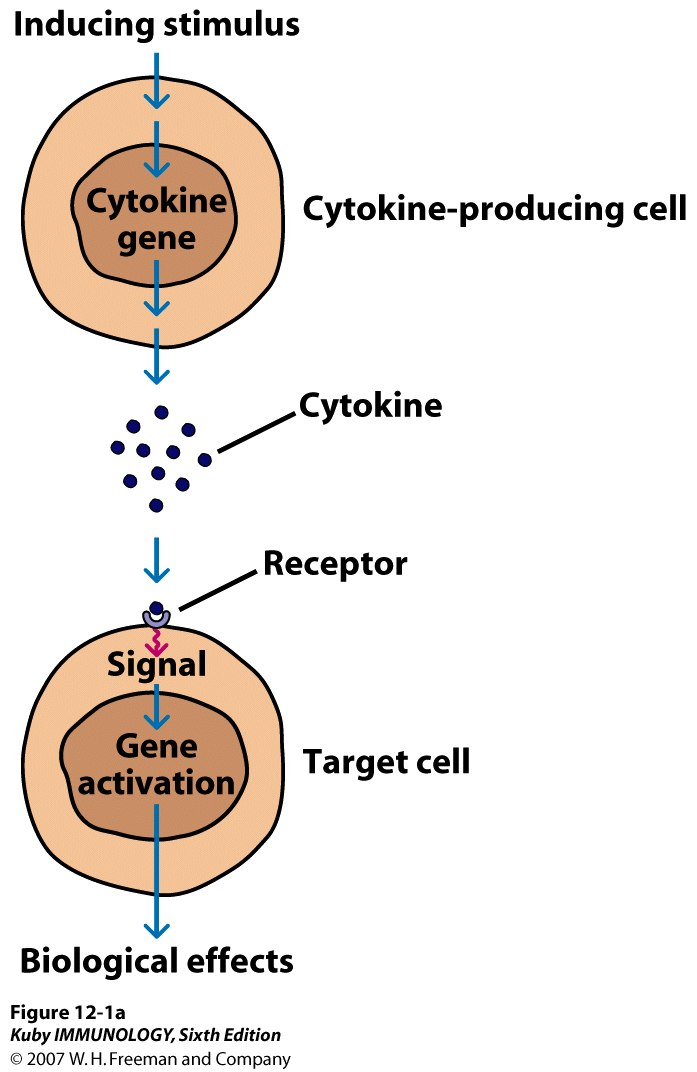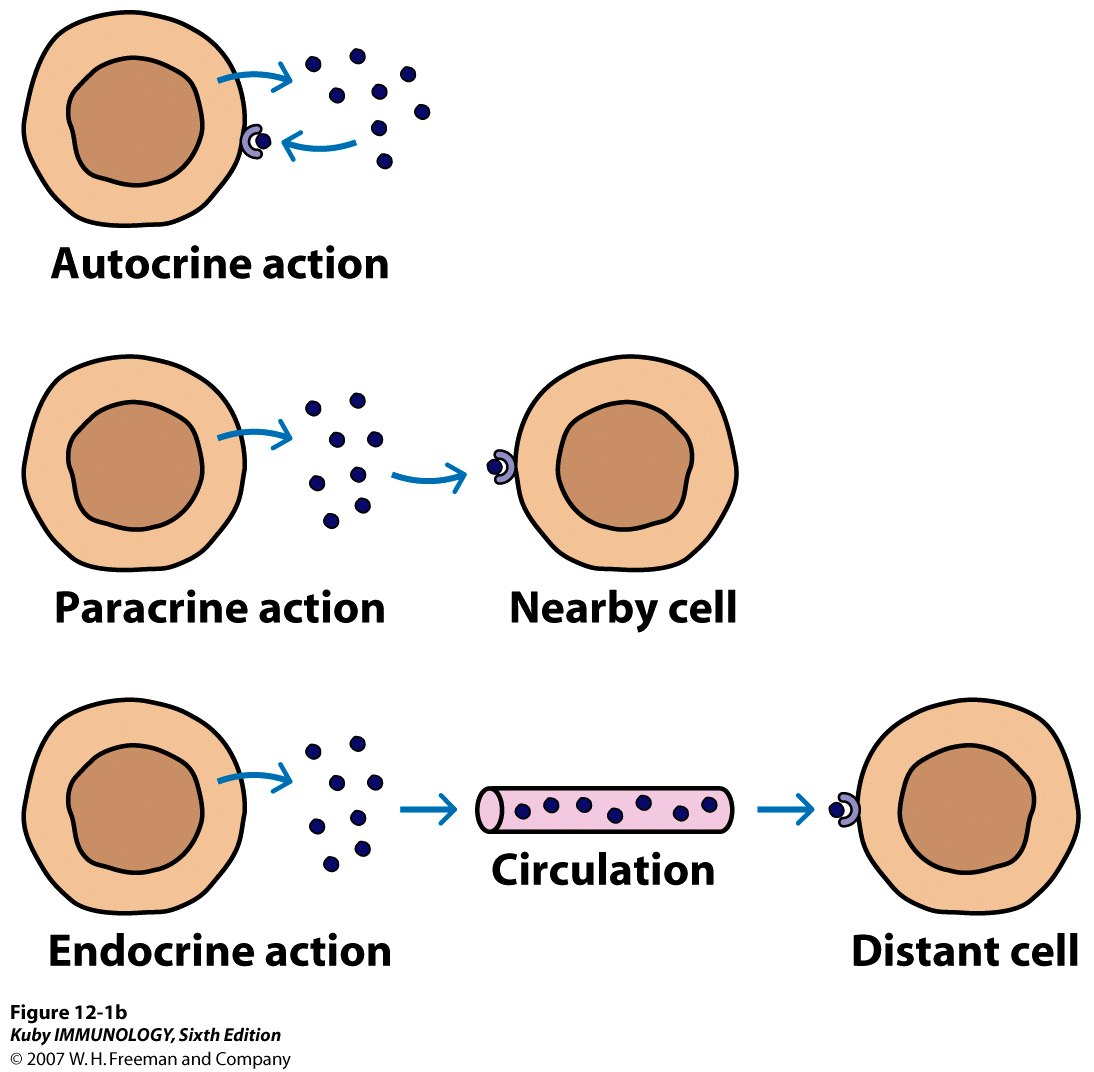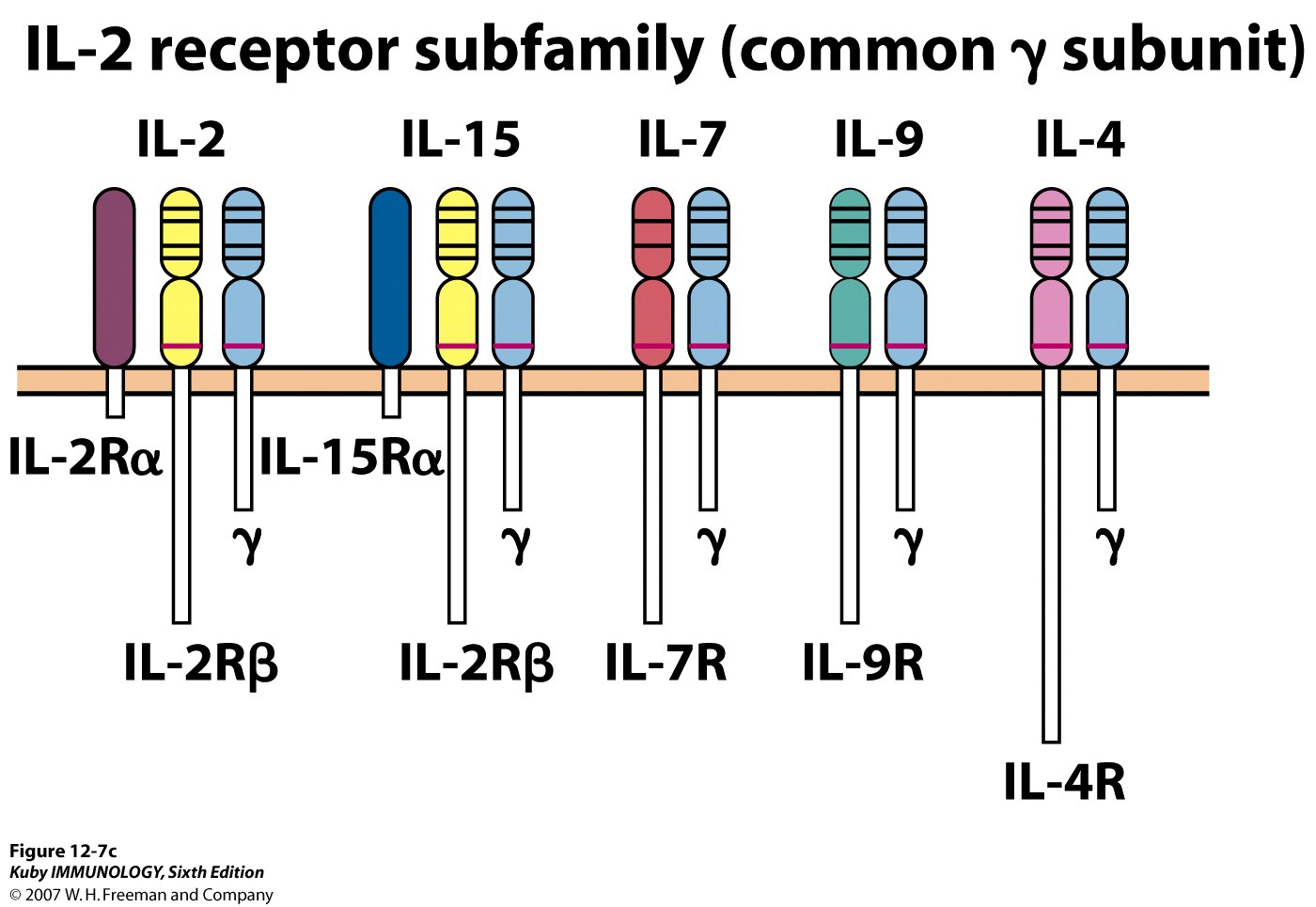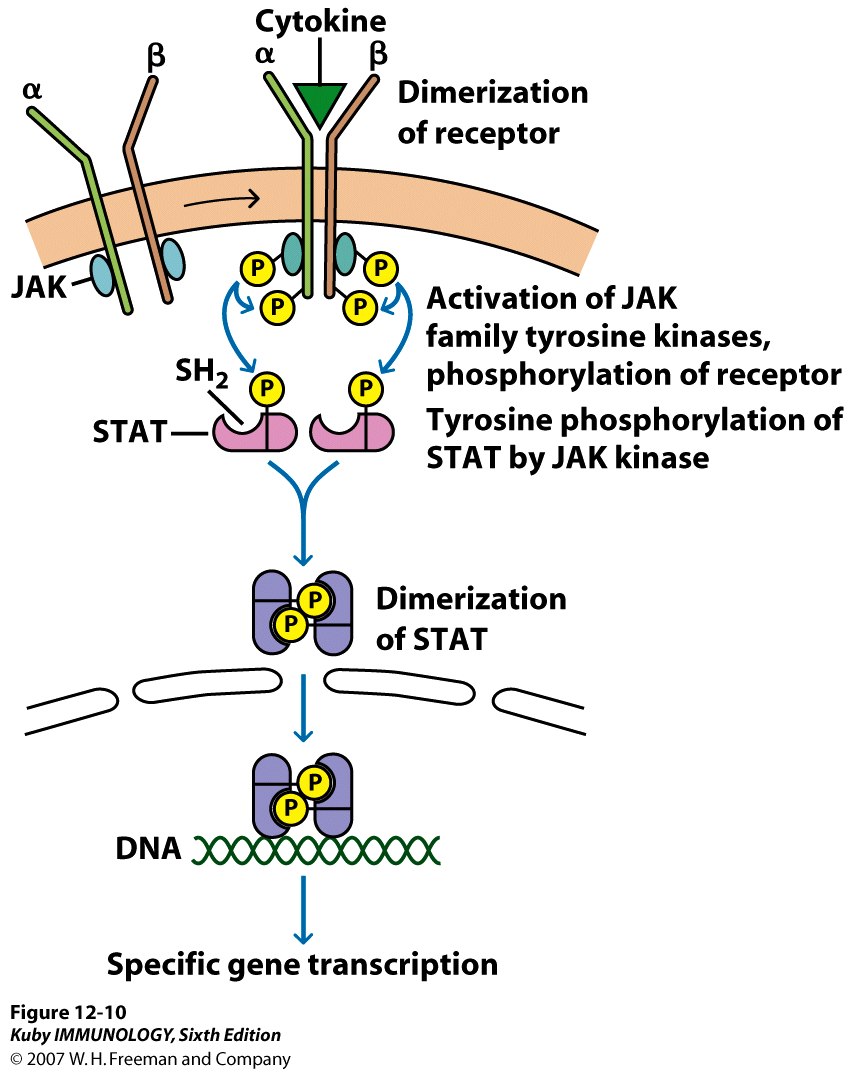



Cytokines are small secreted proteins which mediate and regulate immunity, inflammation, and hematopoiesis. They must be produced de novo in response to an immune stimulus. They generally (although not always) act over short distances and short time spans and at very low concentration. They act by binding to specific membrane receptors, which then signal the cell via second messengers, often tyrosine kinases, to alter its behavior (gene expression). Responses to cytokines include increasing or decreasing expression of membrane proteins (including cytokine receptors), proliferation, and secretion of effector molecules.
Cytokine is a general name; other names include lymphokine (cytokines made by lymphocytes), monokine (cytokines made by monocytes), chemokine (cytokines with chemotactic activities), and interleukin (cytokines made by one leukocyte and acting on other leukocytes). Cytokines may act on the cells that secrete them (autocrine action), on nearby cells (paracrine action), or in some instances on distant cells (endocrine action).
It is common for different cell types to secrete the same cytokine or for a single cytokine to act on several different cell types (pleiotropy; see the table below.) Cytokines are redundant in their activity, meaning similar functions can be stimulated by different cytokines. Cytokines are often produced in a cascade, as one cytokine stimulates its target cells to make additional cytokines. Cytokines can also act synergistically (two or more cytokines acting together) or antagonistically (cytokines causing opposing activities).
Their short half life, low plasma concentrations, pleiotropy, and redundancy all complicated the isolation and characterization of cytokines. Searches for new cytokines is now often conducted at the DNA level, identifying genes similar to known cytokine genes.
Cytokines are made by many cell populations, but the predominant producers are helper T cells (Th) and macrophages.
The largest group of cytokines stimulates immune cell proliferation and differentiation. This group includes Interleukin 1 (IL-1), which activates T cells; IL-2, which stimulates proliferation of antigen-activated T and B cells; IL-4, IL-5, and IL-6, which stimulate proliferation and differentiation of B cells; Interferon gamma (IFNg), which activates macrophages; and IL-3, IL-7 and Granulocyte Monocyte Colony-Stimulating Factor (GM-CSF), which stimulate hematopoiesis.
|
Selected Immune
Cytokines and Their Activities
|
|||
|
Cytokine
|
Producing Cell
|
Target Cell
|
Function**
|
|
IL-2
|
Th1 cells
|
activated T and B cells, NK
cells
|
growth, proliferation, activation |
|
IL-3
|
Th cells
NK cells |
stem cells
|
growth and differentiation |
|
mast cells
|
growth and histamine release | ||
|
IL-4
|
Th2 cells
|
activated B cells
|
proliferation and
differentiation IgG1 and IgE synthesis |
|
macrophages
|
MHC Class II | ||
|
T cells
|
proliferation | ||
|
IFN-a
|
leukocytes
|
various
|
viral replication MHC I expression |
|
IFN-b
|
fibroblasts
|
various
|
viral replication MHC I expression |
|
IFN-g
|
Th1 cells,
Tc cells, NK cells |
various
|
Viral replication |
|
macrophages
|
MHC expression | ||
|
activated B cells
|
Ig class switch to IgG2a | ||
|
Th2 cells
|
proliferation | ||
|
macrophages
|
pathogen elimination | ||
|
TNFa
|
macrophages, mast cells, NK
cells
|
macrophages
|
CAM and cytokine expression |
|
|
|||
|
TNF-b
|
Th1 and Tc cells
|
phagocytes
|
phagocytosis, NO production |
|
tumor cells
|
cell death |
||

Other groups of cytokines include interferons and chemokines. Interferons IFNa and IFNb inhibit virus replication in infected cells, while IFNg also stimulates antigen-presenting cell MHC expression. Chemokines attract leukocytes to infection sites.
